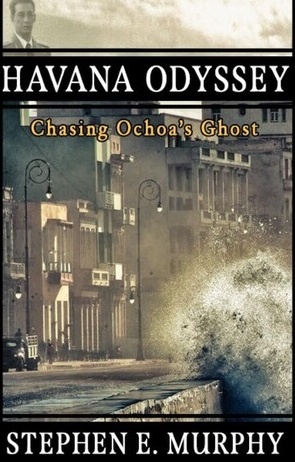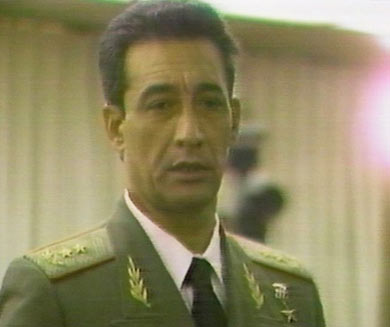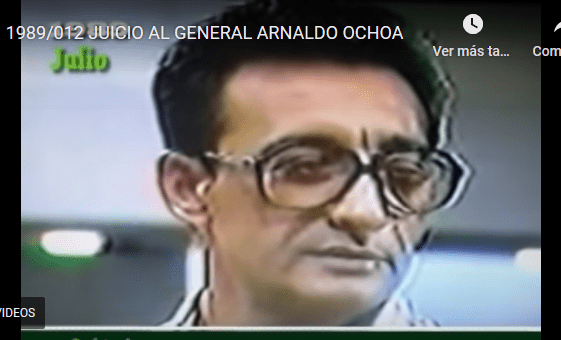Fidel Castro’s Dissident General Invades US Literature

“Havana Odyssey: Chasing Ochoa’s Ghost is an insightful look at modern-day Cuba. The book is sympathetic to the Cuban people yet critical of the inner workings of the authoritarian state. This historical novel reads well, offering romance, treachery, and personal redemption. I like it.” —Dr. Jaime Suchlicki, Director, The Cuban Studies Institute (Coral Gables, FL).
By Vicente Morin Aguado
HAVANA TIMES – Stephen H. Murphy has just revealed his new child, his second book about the most beautiful place human eyes have ever seen (Read On the Edge; and Odyssey, 2016). A historical fiction piece this time, which I would recommend to those interested in getting to know Cuba.
I specifically say “getting to know” because the baggage of controversial information over almost 62 years of the Cuban Revolution, combined with Cubans’ individual struggle, make it very difficult for somebody to say I know Cuba and mean it.
We met in Havana
I met Steve in Havana, two years ago. We were enshrouded in an atmosphere of distinct discretion, necessary for the mission he was about to complete. He has followed the trail of the many and never-ending sightings of a ghost. A ghost that belongs to a man whose humanity Fidel’s powerful repressive apparatus tried to crush.
Major General Arnaldo Ochoa Sanchez made history in spite of his executioners, when he was “legally” shot dead alongside another three high-ranking officials from the Armed Forces and Ministry of Interior, on July 13, 1989. It was the final act of a summary judgement, which was allegedly public, broadcast on national TV. The script and special appearances came from Fidel and Raul Castro themselves.
Staring the last act of his life in the face, Ochoa showed such valor, clearly articulating himself when being interrogated. Not even the manipulated TV edition could hold back a hushed wave of popular sympathy for him. Previously stripped of his uniform and medals, the general ended up dispelling the idyllic and the people’s methodically manufactured trust in the Revolution’s leadership.
A ghost in people’s historical imaginary
Ever since then, the ghost of the man who received the supreme title of Hero of the Republic of Cuba from Fidel Castro, has been wandering the Cuban people’s imaginary, in the thousand forms that only the forbidden can take.
His bravery has transcended so much that several military academies, including in the US, cite some of the brilliant military maneuvers carried out by the Cuban general in Africa.
The author has turned a personal story in Cuba into a novel. With a splash of salsa criolla, like Cuba’s authentic ropa vieja, this dish from Cuban cuisine that saved many poor families in the past. The award Steve deserved, for being a curious US citizen who always asks questions. He took risks with people in a country where the wise Babalaos say “You don’t ask what people know.”
The following is our conversation:

HT: Why did you write this book about Ochoa?
In 1989, when I was the director of USIA-TV (United States Information Agency TV) in Washington DC, I promised Ana Sanchez, the niece of the executed hero, that I would tell General Arnaldo Ochoa’s story to the world.
HT: What do you think US citizens know about the so-called court cases #1 and 2 in Cuba, in 1989?
I admit that very few people learned about Ochoa’s execution by firing squad in 1989. Events such as Tiananmen Square and the Fall of the Berlin Wall had a greater impact. Only the Cuban-American community followed the trial, relying on articles published in the Miami Herald and the New York Times.
HT: History or fiction?
“Havana Odyssey: Chasing Ochoa’s Ghost” is historical fiction, based on the experience (and love) with Ana Maria, Ochoa’s niece. The book is divided into three parts: the first is more autobiographical, including the interrogation with the inspector at Jose Marti airport. The second part is pretty much all factual, and the third part is mostly fiction, telling the story of how the protagonist escapes Cuba.
HT: Is Ochoa a hero or a villain?
His victories in Africa won him the title “Hero of the Republic”, until he gave up on serving the Castros. He was really popular in Cuba between 1988-1989. With the international press’ cry about “drug trafficking”, the Castros made him their scapegoat. They sought to divert attention away from any possible involvement they may have had in such a dangerous matter.
HT: How did you manage to collect information in Cuba?
I interviewed 65 Cubans confidentially on the island. These included an operations official at the Ministry of Interior, who I refer to as the ‘Big Man’ (chapters 4, 23, 31). He served with Ochoa in Angola.

HT: What were your methods?
As I mentioned, I was interrogated really badly at the airport by the inspector. He claimed that “this US professor from Seattle University is a ‘troublemaker’. I had to go to Cuba three times to interview the 65 people. On those trips I met ‘friends of friends’, including friends of the Catholic Church and Protestant believers. I discovered the great network of ‘home churches’ in Cuba, whose devoted helped me, taking great caution. I had to identify teachers and students at Havana University, friends of friends who didn’t follow the Dean’s Marxist line.
HT: Indirect sources, let’s say, literary influences?
From Cuban literature, Jose Marti’s poetry has been an influence, the Estaciones de la Habana books and Netflix series by Leonardo Padura and Our Man in Havana, by Graham Greene.
HT: What is the connection between Stephen Murphy the man and Stephen Murphy the writer?
The promise I made, and didn’t keep, to Ana Maria kept weighing on my conscience and I even dreamt about it for 31 years. In spite of 2020’s challenges, I thank God for allowing me to do good on my promise, telling Havana Odyssey readers my take on General Arnaldo Ochoa’s story.






I’ve just ordered this book from Amazon. As a writer of historic fiction myself, I’m looking forward to reading it. Sounds intriguing.